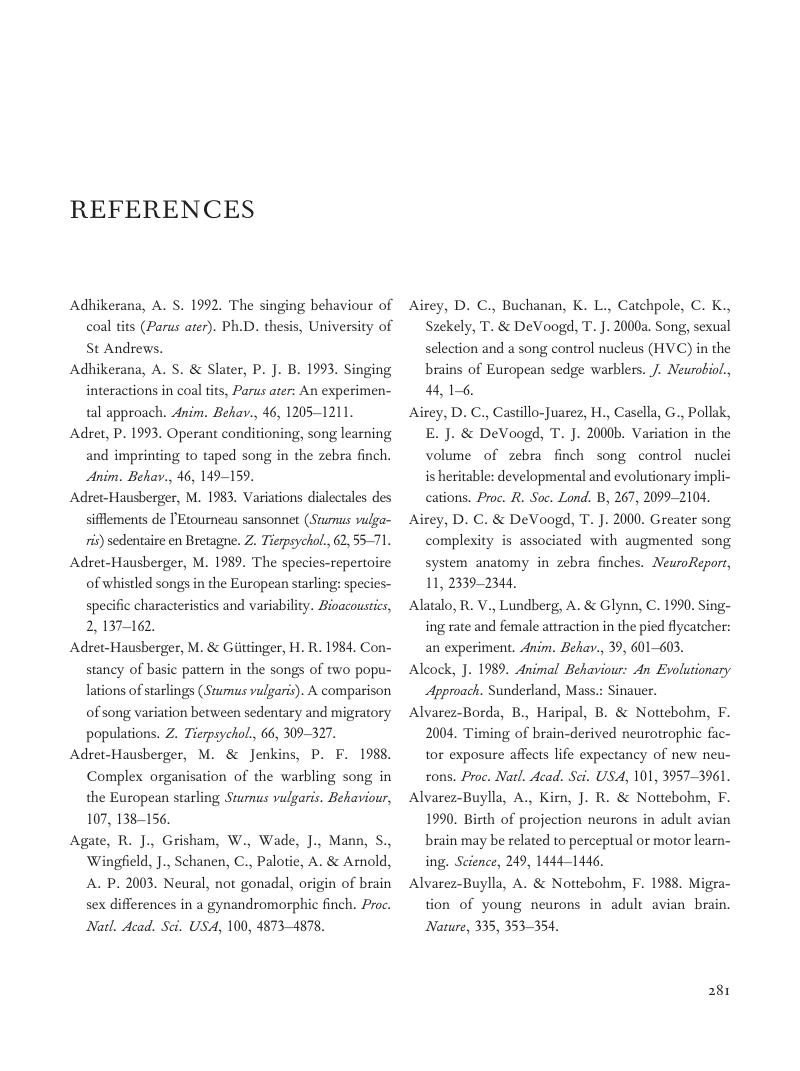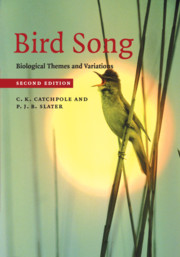Book contents
- Frontmatter
- Contents
- Introduction
- 1 THE STUDY OF BIRD SONG
- 2 PRODUCTION AND PERCEPTION
- 3 HOW SONG DEVELOPS
- 4 GETTING THE MESSAGE ACROSS
- 5 WHEN DO BIRDS SING?
- 6 RECOGNITION AND TERRITORIAL DEFENCE
- 7 SEXUAL SELECTION AND FEMALE CHOICE
- 8 THEMES AND VARIATIONS
- 9 VARIATION IN TIME AND SPACE
- Appendix: Common and scientific names
- References
- Index
- References
References
Published online by Cambridge University Press: 06 July 2010
- Frontmatter
- Contents
- Introduction
- 1 THE STUDY OF BIRD SONG
- 2 PRODUCTION AND PERCEPTION
- 3 HOW SONG DEVELOPS
- 4 GETTING THE MESSAGE ACROSS
- 5 WHEN DO BIRDS SING?
- 6 RECOGNITION AND TERRITORIAL DEFENCE
- 7 SEXUAL SELECTION AND FEMALE CHOICE
- 8 THEMES AND VARIATIONS
- 9 VARIATION IN TIME AND SPACE
- Appendix: Common and scientific names
- References
- Index
- References
Summary

Information
- Type
- Chapter
- Information
- Bird SongBiological Themes and Variations, pp. 281 - 328Publisher: Cambridge University PressPrint publication year: 2008
